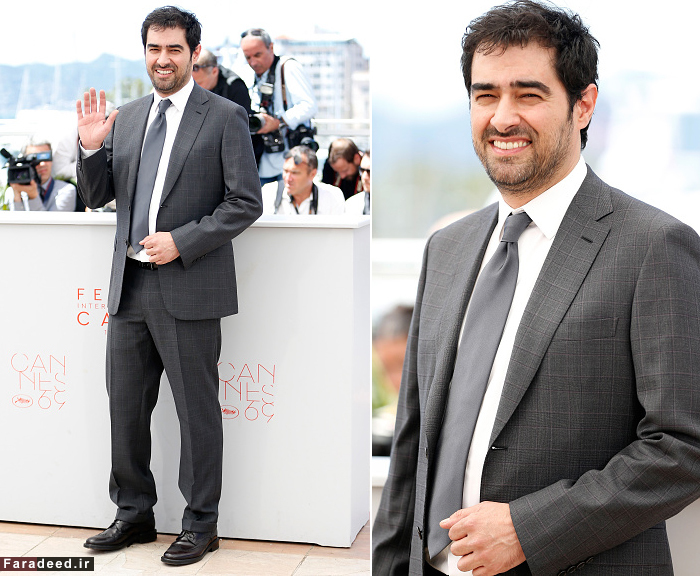Bloody New Doom Will Send You Screaming Back to Hell
بازی های ویدیویی مطالب انگلیسی

A re-imagining of id Software’s 1993 game of the same title. Doom, released last week for PlayStation 4, Xbox One, and PC, is speed and blood, over-the-top violence tethered to a relentless jovial intensity. It’s a game deeply rooted in the history of gaming—as well as in its own predecessor. It’s not nostalgia, though. It’s more like rebirth.
Dark Designs
The original Doom emerged at the intersection of technological innovation and gory artistry. Developer id Software had just finished a game called Wolfenstein 3-D, about infiltrating and conquering a Nazi fortress. It was mean and swift, a first-person gun maze of Nazi soldiers and supernatural enemies. It was also a wild success. It wasn’t the very first first-person shooter, but it was most people’s first experience with the concept, and showed that the PC wasn’t just for slow-paced adventure games and simulations.
id’s follow-up to Wolfenstein was born of the conceptual alchemy of three of the company’s co-founders. John Carmack, a programmer by trade, wanted to overcome that game’s limitations. For all its genius, it was a repetitive experience, its design confined to mazes and tight, linear space; Carmack envisioned a new game engine that would enable levels with dense details and more realistic layouts. To populate those levels, artist Adrian Carmack and level designer John Romero turned to their favorite pop culture, imagining a nasty world inspired by the B-movie viscera of Evil Dead II and the militaristic techno-savagery of James Cameron’s Aliens.
 Click to Open Overlay Gallery
Click to Open Overlay GalleryThe result, Doom, lived up to those inspirations. The player took on the role of a space marine in a Martian facility that’s been overrun by demons—demons he has to dispatch nothing but guns and gritted teeth. Run and kill were the only actions, enemies turned into piles of offal. Full of sophisticated labyrinths thick with secrets and threats, synthesized metal pounding through the speakers, the game channeled over-the-top brutality while remaining surreal and playful.
Upon its release, the game immediately became the poster child for the idea that violent videogames were ruining our youth. Not unrelatedly, it was much bigger than Wolfenstein in both scope and impact. That game may have established the FPS as a proof of concept, but Doom‘s quality and popularity made sure it would be the dominant game genre of the era. Before gamers settled on the phrase “first-person shooter,” for years other games in the genre were referred to as “Doom clones.”
Glory and Gore
So now comes a new Doom. While it was made without the guiding hands of the long-departed Romero and Carmack (who is now CTO at Oculus), it brilliantly rebuilds its source material within the context of modern videogames. It’s a faithful adherent, preaching the gory gospel in a world gone astray.
And that gospel is pretty simple. There’s a plot here, cheesy nonsense about a futuristic mega-corporation turning the power of hell into a weapon and source of alternative energy, but it only exists to create a loose context for the same old story of Doom: Hell has invaded a high-tech facility on Mars. You’re the demon killer. Rip and tear.
 Click to Open Overlay Gallery
Click to Open Overlay GalleryThe new Doom captures the essence of the first game gracefully: bracingly fast combat against aggressive hordes. Gameplay is built upon speed and improvisation, forcing the player to quickly learn and utilize complex, vertically layered environments to engage and conquer Doom Guy’s foes. Close-up takedowns reward health and ammunition, forcing a cadence of retreat-and-advance in order to blast each death arena into silence. Playing feels like constantly being on the verge of having a massive panic attack. It’s a perfect blur of adrenaline.
It’s still violent, still a chance to revel in gruesome juvenile aggression, but the violence doesn’t exist for its own sake. It’s simply the currency of the world of Doom, a surreal blend of sci-fi, fantasy, and the occult that refuses to take itself very seriously. It’s dire without being serious, a heavy metal album cover come to life—which is exactly what it’s trying to be.
Despite its lack of a complex plot, the original Doom was rich in environmental story, the kind that unfolded as you passed through its levels. First came cold, industrial spaces; slowly, though, those began to change. Hell itself seeped in in the form of flesh-pink walls and increasingly unreal level layouts, culminating in an unsettlingly techno-organic portrait of hell itself in the game’s third episode. Hell emerged as a type of organism, an infection blurring the line between a cold world of machines and a hot world of flesh. As Doom Guy, you were antibody: panacea with a shotgun.
The new Doom recaptures a good bit of that in its own design, although the organic creepiness doesn’t pop the same way in today’s photorealistic visual style. Barren metal corridors give way to viscera-coated walls, burning pentagrams and ritual piles of corpses transfiguring the Martian facility into something less than rational. Ultimately, Doom Guy descends into a fusion of machine and flesh, hell’s technologically augmented bowels gaping open.
 Click to Open Overlay Gallery
Click to Open Overlay Gallery
Community Focus
1993’s Doom succeeded for reasons beyond its nearly perfect single-player experience and its remarkable violence. It was one of the first games to feature networked multiplayer, allowing fans to test their skills competitively in four-player battles. This was another new wrinkle in first-person shooter design; shooters were now the site of communal revelry, and they didn’t end once you cleared the final boss battle.
Sharing a game’s space didn’t stop with LAN battles, though. Almost from the beginning, computer-savvy tinkerers modified the game code to create their own visions. These creations ran the gamut from simple replacements of textures and redesigned level layouts to entirely new games made out of id’s technology. Doom‘s modding scene was so extensive and influential that it’s still active, 23 three years later. (John Romero himself just released a new Doom level earlier this year.)
Doom 2016 tries to replicate both elements, with mixed results. The new multiplayer feels uninspired, using the language of the past in a way similar to the single-player experience but with less verve. It lacks the same visceral satisfaction, and while it’s good fun, it’s not particularly remarkable.
A level editor included in the package is a user-friendly way for players to create their own experiences. It’s a good level editor, robust and easy to pick up, but it’s a far cry from the down-to-the-metal modding of the old school. While the new game captures so much of the aesthetic and spirit of the original, it falters here, simply not tapping deeply enough into the freedom that extended the first game’s life for so long.
 Click to Open Overlay Gallery
Click to Open Overlay GalleryThe original Doom transcended videogame to become cultural icon, the inspiration for a hundred imitations, ports on virtually every digital medium imaginable including airplanes, and even a terrible movie starring The Rock. The new Doom succeeds by taking that legacy seriously, rendering it as a religion of sorts: the cult of Doom Guy writ through generations. To play is to enact a mass-media ritual, to go where a million other players have gone before you and will go again.
The legions of hell should be quaking in their boots: Doom has been reborn.
نظرات (۰)
هیچ نظری هنوز ثبت نشده است
تبليغات
جستجو
طبقه بندی موضوعی
- اخبار فناوری (۷)
- بازی های ویدیویی (۴)
- ویندوز (۲)
- اندروید و ios (۴)
- ویدیو (۲)
- مطالب متفرقه (۴)
- گجت (۳)
- نرم افزار (۱)
- خودرو (۱)
- مطالب انگلیسی (۲)
- آموزشی (۱)
بایگانی
- تیر ۱۳۹۵ (۲)
- خرداد ۱۳۹۵ (۱۸)
- ارديبهشت ۱۳۹۵ (۱۱)
- دی ۱۳۹۴ (۵)
کلمات کلیدی
آخرين مطالب
-
-
هک شدن سایت سازمان صنعت، معدن و تجارت رد شد
سه شنبه ۱ تیر ۱۳۹۵ -
ویدیو کنترل دست رباتیک،انسان با ذهن
دوشنبه ۳ خرداد ۱۳۹۵ -
دست رباتی که قابل به بلند کردن هرچیزی است
دوشنبه ۳ خرداد ۱۳۹۵ -
آموزش ساخت مدار انتقال برق بی سیم
دوشنبه ۳ خرداد ۱۳۹۵ -
ZTE گوشی Grand X Max 2 را معرفی کرد؛ دوربین دوگانه و نمایشگر ۶ اینچی
دوشنبه ۳ خرداد ۱۳۹۵ -
نقد فیلم جادوگر – The Witch
دوشنبه ۳ خرداد ۱۳۹۵ -
ترانه علیدوستی در جشنواره فیلم کن
يكشنبه ۲ خرداد ۱۳۹۵ -
شهاب حسینی برنده بهترین بازیگر مرد شد-خبر-خخ
يكشنبه ۲ خرداد ۱۳۹۵ -
Bloody New Doom Will Send You Screaming Back to Hell
يكشنبه ۲ خرداد ۱۳۹۵























